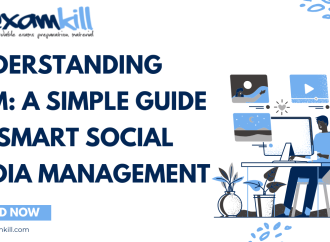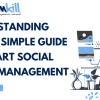As the pandemic continues to force us to adjust our daily lives, it’s also had a significant impact on the real estate market. From how people search for properties to how they buy and sell them, the entire landscape has been altered. But that doesn’t mean the outlook is all doom and gloom – far
As the pandemic continues to force us to adjust our daily lives, it’s also had a significant impact on the real estate market. From how people search for properties to how they buy and sell them, the entire landscape has been altered. But that doesn’t mean the outlook is all doom and gloom – far from it. In fact, those who dive into this new real estate environment are poised to come out ahead of the competition and gain an edge in their search for their perfect home or investment property. In this blog post, we’ll take a look at how the pandemic is reshaping real estate trends and what potential buyers need to know about what’s to come.
The Shift to Remote Work
The pandemic has forced many companies to re-evaluate their office space needs and shift to remote work. This has led to increased demand for residential properties with good internet access and ample space for a home office. Suburban areas and small towns are becoming more popular as people look for more affordable options outside of major cities.
The pandemic has also spurred a trend towards more flexible and shorter lease terms. Many businesses are hesitant to commit to long-term leases in the current economic climate. This is leading to an increase in demand for coworking spaces and other short-term rental options.
As the pandemic continues to reshape the way we work, it’s important to stay ahead of the latest trends. Flexibility and adaptability will be key in navigating the ever-changing real estate landscape.
The Rise in Single-Family Home Sales
The past year has been a roller coaster for the real estate market. After a strong start to 2020, the pandemic caused a sharp decline in sales and prices as buyers pulled back and uncertainty about the future abounded. However, as vaccines have begun to roll out and more people have become comfortable with the idea of living through a pandemic, we’ve seen a rebound in the market. In particular, single-family home sales have risen sharply in recent months, as buyers look for more space and amenities than they can find in an urban apartment.
What’s driving this trend? A combination of factors, including low interest rates, increased telecommuting opportunities, and a desire for more space after months spent indoors. And it’s not just families looking for suburban homes; singles and retirees are also driving the trend as they seek out second homes or places to escape crowded cities.
Whatever the reason, it’s clear that the pandemic has changed our housing preferences and spurred a new wave of demand for single-family homes. So if you’re thinking of selling your home, now may be the time to do it. Contact a local real estate agent to learn more about your options.
The Decline in Multifamily Construction
It’s no secret that the pandemic has had a profound impact on the real estate industry. One of the most notable changes has been the decline in multifamily construction. According to a recent report from the National Association of Home Builders, starts for multifamily buildings (which include apartments, condos, and townhomes) fell by nearly 17% in 2020. This is largely due to the fact that developers are facing unprecedented challenges, including higher construction costs and difficulty securing financing.
What does this mean for the future of multifamily construction? It’s hard to say for sure, but it’s likely that we’ll see a continued slowdown in starts over the next few years. This could lead to fewer new apartment buildings being built, which could put upward pressure on rents. It’s also possible that we’ll see more developers shifting their focus to single-family homes, which have been more resilient to the pandemic-induced downturn.
How the Pandemic Is Reshaping the Future of Real Estate
As the COVID-19 pandemic continues to upend daily life around the world, it’s also having a major impact on the real estate industry. From the way we buy and sell homes to the way we live in them, the pandemic is reshaping real estate trends in a big way.
Here’s a look at some of the most significant ways the pandemic is reshaping the future of real estate:
1. The rise of virtual home buying and selling: With social distancing becoming the new norm, more and more people are turning to virtual tools to buy and sell homes. Platforms like Zillow Offers and Redfin Now are making it possible to buy and sell homes entirely online, without ever stepping foot inside them.
2. A shift from urban to suburban living: The pandemic has led many people to reevaluate their living situations, with many opting for more space and less density. This has caused a shift in demand from urban areas to suburban areas, as well as from larger homes to smaller ones.
3. More flexible work-from-home policies: The pandemic has forced many businesses to let their employees work from home, leading to a surge in demand for remote-friendly properties. This trend is likely here to stay, even after the pandemic ends, as more companies realize the benefits of flexible work-from-home policies.
4. An increase in investment properties: With interest rates at historic























Leave a Comment
Your email address will not be published. Required fields are marked with *